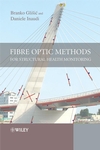
Tuesday, March 31, 2009
U.S. Panel on Structural Control and Monitoring

Using wireless sensors to monitor bridge safety

University of Texas (UT) professor, Dean Neikirk, will be field-testing a new bridge monitoring system within the year. The project is a collaboration between industry, government, and academia that will provide real-time monitoring of dangerous bridges and reduce inspection costs for all bridges.
"Most bridges have already been built," says Neikirk. "Our project will develop simple, low-cost equipment that can be used to retrofit existing construction as well as in new construction, but we are primarily concerned with ensuring that bridges do not fail without warning. Most aging bridges do not necessarily require replacement, they just need to be monitored for signs of corrosion and wear."
Neikirk and principal investigator and UT Civil, Architectural, and Environmental Engineering Chair Sharon L. Wood are developing a network of low-power wireless sensors capable of capturing and transmitting data to a central location. They already have working sensors, a data collection methodology, and specifications for sensor placement. Researchers are working on (1) powering sensors with solar, wind, or traffic vibrations instead of batteries, (2) ensuring the sensor output is compatible with National Instruments (NI) equipment that will be collecting the data and that NI equipment is rugged enough for outdoor use, and (3) preventing the steel structures from interfering with the radio signals used to transmit data.
[University of Texas at Austin]



